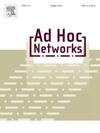RPL-TSCH跨层设计提高工业物联网lln服务质量
IF 4.4
3区 计算机科学
Q1 COMPUTER SCIENCE, INFORMATION SYSTEMS
引用次数: 0
摘要
物联网(IoT)通过建立人与物体之间的联系来促进相互互动。物联网的采用正在迅速扩展到人类生活的各个方面。工业物联网(IIoT)是物联网与工业之间的交叉点,是第四次工业革命的关键驱动力,也被称为工业4.0 (I4.0)。低功耗和有损网络(lln)作为物联网和工业物联网的基础模块,包含许多资源受限的节点,是这场革命的重要组成部分。考虑到lln的资源约束以及工业物联网的任务、安全性和业务关键性,提高服务质量(QoS)已成为一项重大挑战。解决这一挑战需要优化资源利用和跨不同层协议的充分协调决策,这可以通过跨层设计来实现。低功耗损耗网络路由协议(RPL)和时隙信道跳频(TSCH)是工业物联网协议栈中两个广泛使用的标准协议。在本文中,我们研究了影响RPL和TSCH中QoS的基本因素,并提出了一种RPL-TSCH跨层(RTCL)设计,用于IIoT中的lln,由排队论导出的方程驱动。方程和仿真结果表明,节点队列的到达率和服务率不一致导致队列溢出和延迟增加,可靠性和吞吐量下降。提出的RTCL设计是一个集成了RPL和TSCH信息的六步解决方案,通过控制到达率和提高节点队列的服务率两种主要策略来提高QoS。各种仿真场景的评估结果表明,RTCL在改善QoS参数的同时也增强了负载均衡和网络稳定性。本文章由计算机程序翻译,如有差异,请以英文原文为准。
RPL-TSCH cross-layer design for improve quality of service in LLNs of IIoT
The Internet of Things (IoT) facilitates mutual interaction by establishing a connection between humans and objects. The adoption of IoT is rapidly expanding across various aspects of human life. Industrial IoT (IIoT) is the intersection point between IoT and industry, serving as a key driver of the Fourth Industrial Revolution, also referred to as Industry 4.0 (I4.0). Low-Power and Lossy Networks (LLNs), which contain many resource-constrained nodes, as the basic block in IoT and IIoT, are an essential part of this revolution. Given the resource constraint of LLNs and the mission, safety, and business criticality of IIoT, enhancing Quality of Service (QoS) has become a significant challenge. Addressing this challenge requires the optimal utilization of resources and fully coordinated decision-making across different layer protocols, which can be achieved through cross-layer design. Routing Protocol for Low-Power and Lossy Networks (RPL) and Time Slotted Channel Hopping (TSCH) are two widely used standard protocols in the IIoT protocol stack. In this paper, we investigate the fundamental factors affecting QoS within the RPL and TSCH and propose an RPL-TSCH Cross-Layer (RTCL) design for LLNs in IIoT, motivated by equations derived from queuing theory. The equations and simulation results reveal that the inconsistency between the arrival rate and service rate of the node's queue leads to increasing queue overflow and delay and decreasing reliability and throughput. The proposed RTCL design, structured as a six-step solution that integrates RPL and TSCH information, enhances QoS by employing two primary strategies: controlling the arrival rate and increasing the service rate of the nodes’ queues. Evaluation results from various simulation scenarios demonstrate that RTCL improves QoS parameters while also enhancing load balancing and network stability.
求助全文
通过发布文献求助,成功后即可免费获取论文全文。
去求助
来源期刊

Ad Hoc Networks
工程技术-电信学
CiteScore
10.20
自引率
4.20%
发文量
131
审稿时长
4.8 months
期刊介绍:
The Ad Hoc Networks is an international and archival journal providing a publication vehicle for complete coverage of all topics of interest to those involved in ad hoc and sensor networking areas. The Ad Hoc Networks considers original, high quality and unpublished contributions addressing all aspects of ad hoc and sensor networks. Specific areas of interest include, but are not limited to:
Mobile and Wireless Ad Hoc Networks
Sensor Networks
Wireless Local and Personal Area Networks
Home Networks
Ad Hoc Networks of Autonomous Intelligent Systems
Novel Architectures for Ad Hoc and Sensor Networks
Self-organizing Network Architectures and Protocols
Transport Layer Protocols
Routing protocols (unicast, multicast, geocast, etc.)
Media Access Control Techniques
Error Control Schemes
Power-Aware, Low-Power and Energy-Efficient Designs
Synchronization and Scheduling Issues
Mobility Management
Mobility-Tolerant Communication Protocols
Location Tracking and Location-based Services
Resource and Information Management
Security and Fault-Tolerance Issues
Hardware and Software Platforms, Systems, and Testbeds
Experimental and Prototype Results
Quality-of-Service Issues
Cross-Layer Interactions
Scalability Issues
Performance Analysis and Simulation of Protocols.
 求助内容:
求助内容: 应助结果提醒方式:
应助结果提醒方式:


